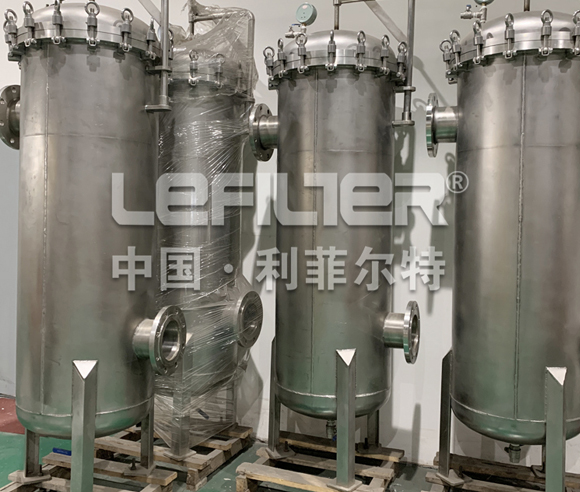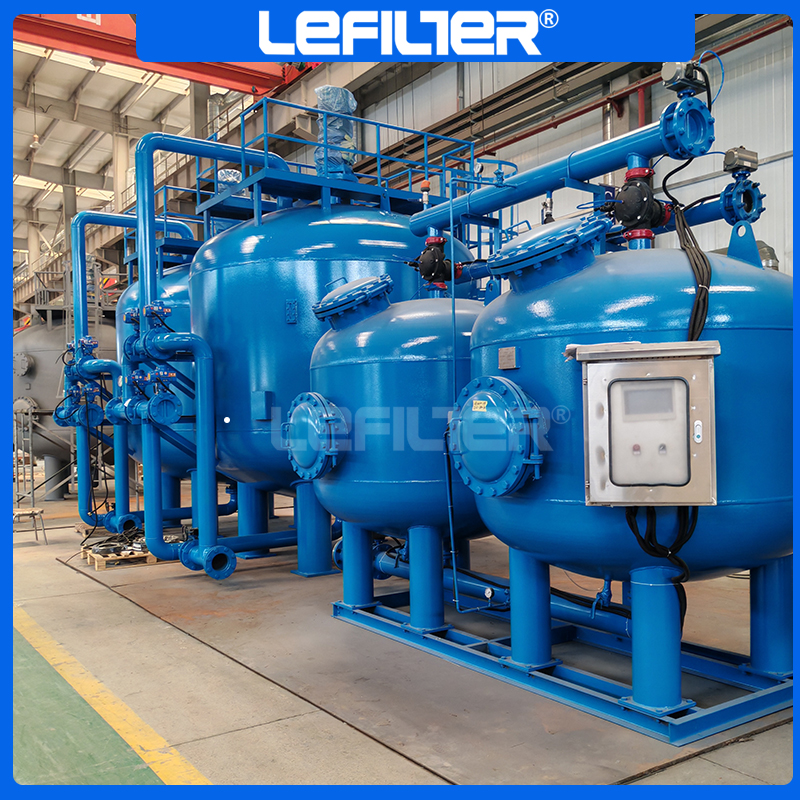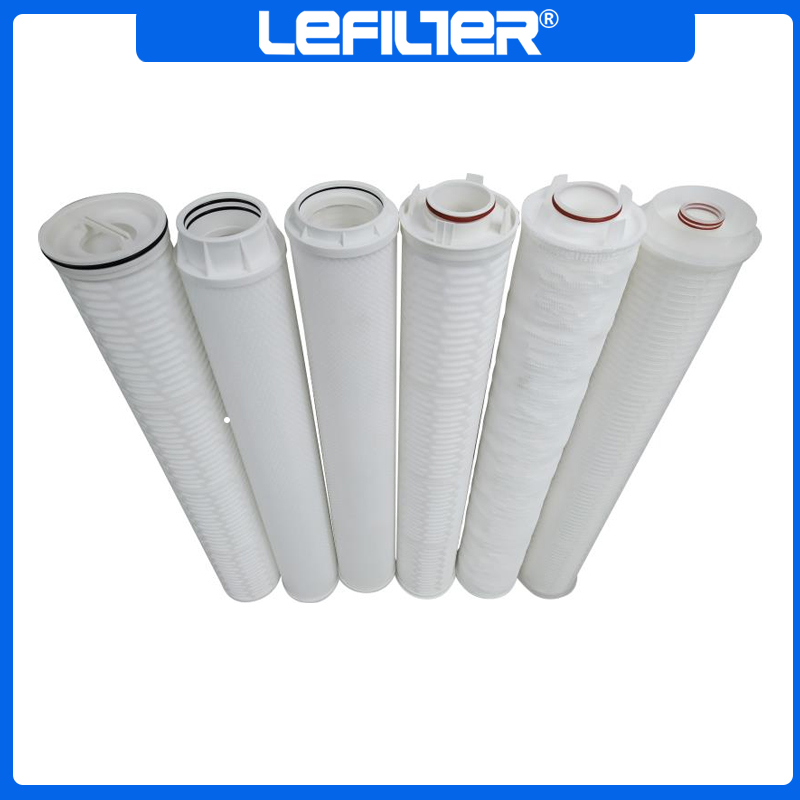Types of Filters Used in Power Plants
DATE:2024-12-07 Number of views: 1 Source:dongwenhui
Power plants rely heavily on water for cooling, steam generation, and other operational processes. However, water drawn from natural sources is often contaminated with suspended solids, microorganisms, and other impurities that can damage plant equipment, reduce operational efficiency, and increase maintenance costs. To ensure the longevity and performance of critical systems such as turbines, boilers, and cooling towers, power plants use various filtration systems. These filters, including cartridge filters, bag filters, and sand filters, play an essential role in maintaining water quality, ensuring plant efficiency, and meeting environmental standards. This article provides an overview of the types of filters commonly used in power plants and their role in maintaining optimal operations.
1. Cartridge Filters
Cartridge filters are one of the most widely used filtration solutions in power plants. These filters consist of a porous medium, often made from materials like polypropylene, polyester, or stainless steel, which physically traps and removes contaminants from water. The filters are available in various sizes and configurations, depending on the specific needs of the power plant.
Cartridge filters are commonly used in pre-treatment systems for both cooling water and boiler feedwater. In cooling systems, they help remove large particles such as debris, sand, and rust that could damage pumps, heat exchangers, or turbines. In the case of steam generation, cartridge filters are used to remove fine particulate matter and microorganisms that could lead to scaling or corrosion in boilers.
Advantages:
High filtration efficiency: They offer excellent filtration for removing small particles and impurities.
Ease of maintenance: Cartridge filters are easy to replace and clean.
Compact design: They require less space compared to other filtration systems.
Applications:
Pre-treatment of cooling water.
Boiler feedwater filtration.
Turbine protection systems.

2. Bag Filters
Bag filters are another common filtration solution in power plants, especially in applications where high dirt-holding capacity is required. These filters consist of a fabric filter bag that captures contaminants as water flows through it. The fabric bags are typically made from woven synthetic fibers such as polyester or polypropylene, which are designed to trap a variety of particles, including sediments, debris, and organic matter.
Bag filters are used in cooling water treatment systems, where they help prevent debris from entering heat exchangers, cooling towers, and pumps. They are also used in wastewater management systems, where they filter out solids from the plant's effluent before being discharged into natural water sources.
Advantages:
High dirt-holding capacity: Bag filters can hold a large amount of dirt, reducing the frequency of maintenance and replacement.
Cost-effective: They are relatively inexpensive and offer long service life in certain applications.
Versatility: Bag filters come in a variety of materials and configurations, making them suitable for different types of water and filtration needs.
Applications:
Cooling water filtration.
Wastewater treatment and effluent filtration.
Pre-treatment for reverse osmosis systems.

3. Sand Filters
Sand filters are one of the oldest and most commonly used types of filters in water treatment processes. These filters use sand or a similar granular medium to filter out suspended solids, dirt, and organic matter. As water flows through a bed of sand, the particles are trapped, and the filtered water exits from the bottom of the bed.
Sand filters are typically used in large-scale power plants as part of the pre-treatment process for cooling water systems. The primary role of sand filters is to remove larger suspended particles, debris, and organic matter from the water before it enters sensitive equipment such as pumps, turbines, and heat exchangers.
Advantages:
Simple operation: Sand filters are easy to operate and require minimal maintenance.
Cost-effective: They are a low-cost solution for removing larger particles from water.
Durability: Sand filters have a long lifespan and can withstand harsh operational conditions.
Applications:
Cooling water treatment.
Pre-filtration for reverse osmosis or demineralization systems.
Wastewater treatment.

4. Activated Carbon Filters
Activated carbon filters are widely used for removing organic compounds, chlorine, and other chemicals from water. These filters consist of carbon material that has been treated to have a large surface area, making it highly effective at adsorbing a wide range of contaminants. Activated carbon filters are commonly used in power plants for cooling water treatment and for removing chlorine or other chemicals from feedwater.
The role of activated carbon filters is to protect sensitive equipment from chemical contaminants that could cause corrosion or fouling. They are also used in cooling systems to remove odors and improve the overall quality of the cooling water.
Advantages:
High adsorption capacity: Activated carbon can remove a wide range of organic contaminants, including volatile organic compounds and chlorine.
Chemical removal: Activated carbon is highly effective at removing chlorine, which can damage sensitive equipment like heat exchangers and pumps.
Improved water quality: They improve the overall quality of water, which enhances the performance of power plant systems.
Applications:
Removing chlorine from cooling water.
Dechlorination in pre-treatment systems.
Odor removal in cooling water.

5. Disc Filters
Disc filters are a relatively newer type of filtration technology used in power plants. These filters consist of multiple stacked discs that create filtration surfaces, where water passes through small channels between the discs, trapping contaminants. Disc filters are typically used in fine filtration applications and offer excellent performance when dealing with large volumes of water.
In power plants, disc filters are often used in cooling water systems to remove fine particulate matter and suspended solids that could otherwise damage sensitive equipment. Their compact design and high dirt-holding capacity make them an ideal choice for applications that require continuous, high-flow filtration.
Advantages:
High dirt-holding capacity: Disc filters can handle large volumes of water and accumulate significant amounts of debris before requiring maintenance.
Continuous operation: They offer a high level of operational efficiency, with less frequent maintenance.
Compact design: The filter's compact design allows for easy integration into existing systems.
Applications:
Fine filtration for cooling water systems.
Pre-filtration for reverse osmosis and demineralization systems.
6. Microfiltration and Ultrafiltration
Microfiltration and ultrafiltration systems are used to remove smaller particles, including bacteria, viruses, and fine colloidal material, from water. Microfiltration uses membranes with pore sizes typically ranging from 0.1 to 10 microns, while ultrafiltration membranes have even smaller pores, typically between 0.01 and 0.1 microns.
In power plants, these filtration technologies are used in specific applications where high water quality is required, such as in the treatment of feedwater for reverse osmosis systems or in the final treatment of cooling water to remove microorganisms and prevent fouling.
Advantages:
Effective removal of microorganisms: These filters are highly effective at removing bacteria, viruses, and other pathogens.
High-quality water: They provide high-quality water, which is crucial for processes like reverse osmosis or sensitive equipment protection.
Low energy consumption: Compared to other filtration technologies, microfiltration and ultrafiltration use relatively low energy.
Applications:
Final filtration in water treatment processes.
Feedwater preparation for reverse osmosis systems.
Removal of microorganisms in cooling water systems.

Conclusion
Water filtration systems are indispensable in power plants, where they help ensure the protection and longevity of critical equipment such as turbines, boilers, and cooling systems. Filters such as cartridge filters, bag filters, and sand filters play specific roles in removing suspended solids, debris, and organic matter from water to improve operational efficiency and prevent damage. By maintaining water quality, these filtration systems help power plants operate more efficiently, reduce maintenance costs, and meet environmental regulations.
FAQ
What is the role of filters in power plants?
Filters remove impurities from water used in turbines, boilers, and cooling systems to protect equipment, improve efficiency, and reduce maintenance costs.What are cartridge filters used for in power plants?
Cartridge filters are used to remove small particles and contaminants from water before it enters sensitive equipment like turbines and boilers.How do bag filters differ from cartridge filters?
Bag filters have a higher dirt-holding capacity and are used for larger volumes of water, whereas cartridge filters are more effective for finer filtration.What are sand filters used for in power plants?
Sand filters are used in cooling water treatment to remove larger suspended solids and debris that could damage equipment.What is activated carbon filtration used for?
Activated carbon filters are used to remove organic compounds, chlorine, and other chemicals from water to protect equipment from corrosion and fouling.When are disc filters used in power plants?
Disc filters are used for fine filtration in cooling water systems, particularly in high-flow applications.What is the difference between microfiltration and ultrafiltration?
Microfiltration removes larger particles (0.1–10 microns), while ultrafiltration targets smaller particles (0.01–0.1 microns), including bacteria and viruses.How do filtration systems reduce power plant downtime?
By removing contaminants that could damage equipment, filtration systems reduce the need for maintenance and prevent unplanned downtime.


